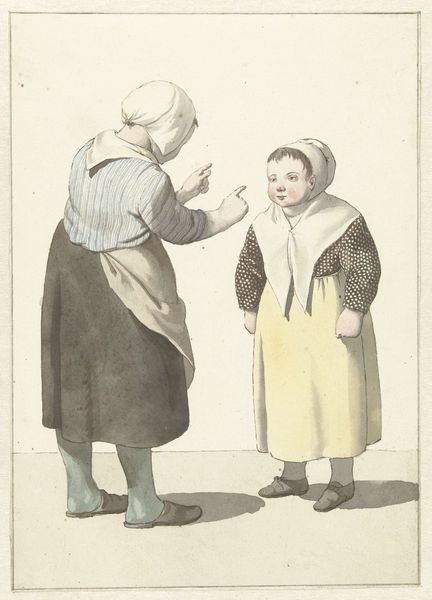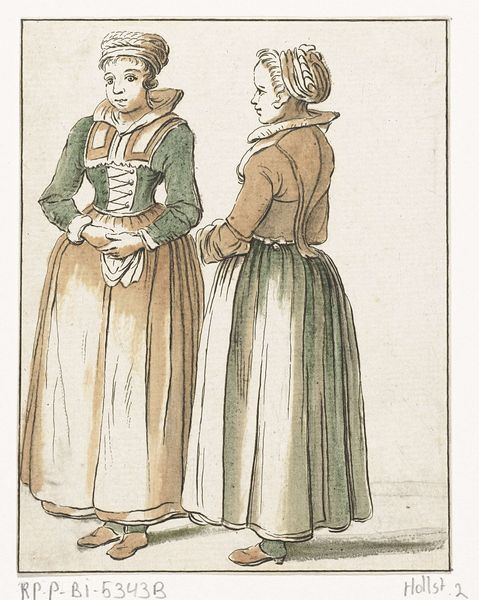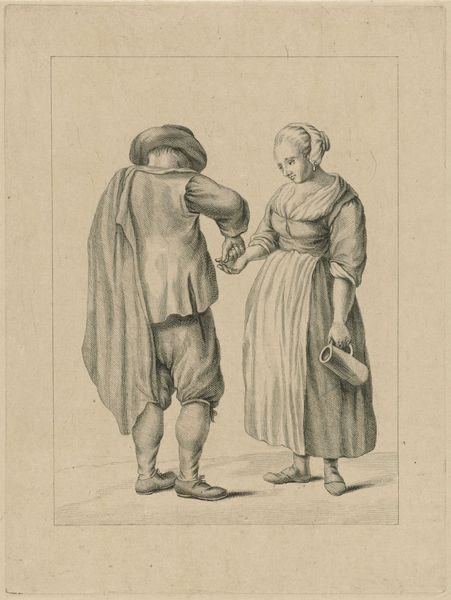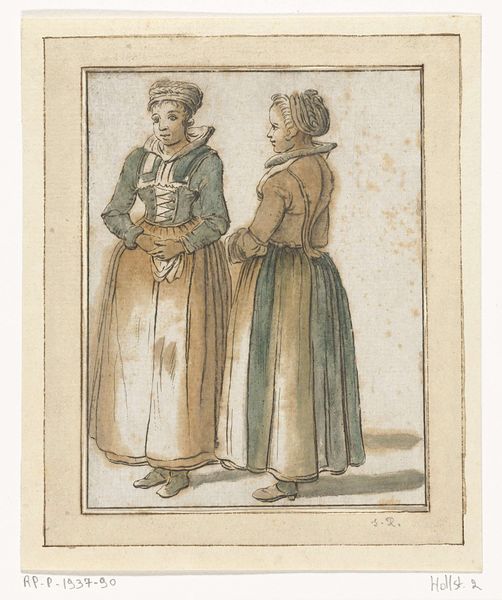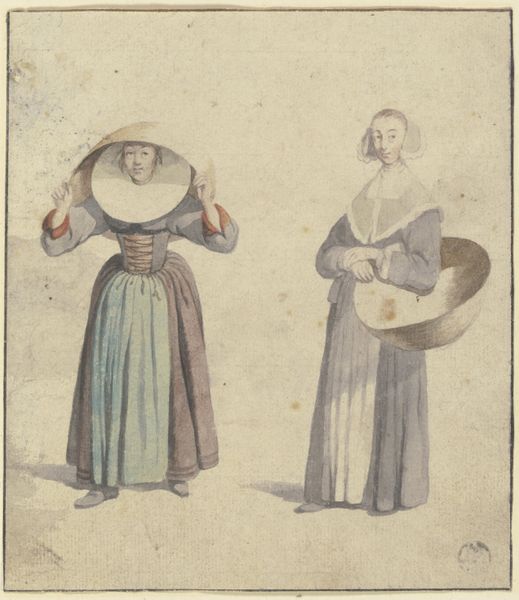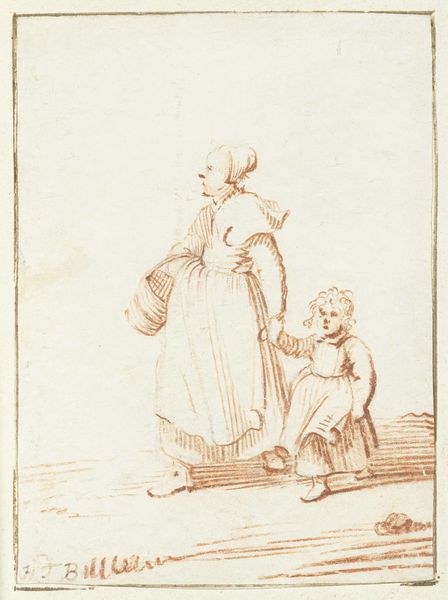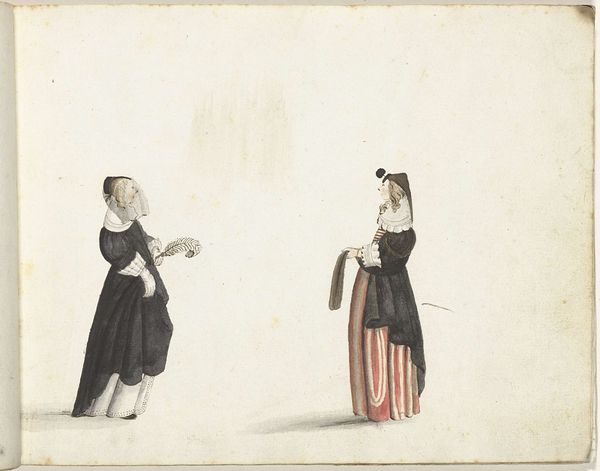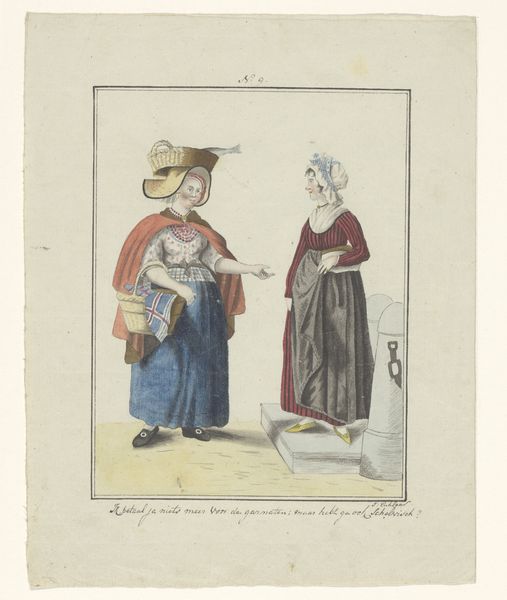
Dimensions: height 269 mm, width 206 mm
Copyright: Rijks Museum: Open Domain
Curator: It feels like a fleeting moment, doesn't it? A little play caught in watercolor. There’s something sweetly humorous and utterly relatable about this encounter. Editor: Here we have a drawing called "Stoffenverkoper onderhandelend met een vrouw," which roughly translates to "Fabric seller negotiating with a woman," by W. Barthautz, dating from somewhere between 1700 and 1800. It’s a genre painting, depicting an everyday scene rendered in watercolor. Immediately striking is its commentary on trade, and how commerce inserts itself into social dynamics. Curator: Absolutely, and that slight upward tilt of her chin suggests her readiness to parry! Her expression suggests the calculation in haggling. You know, I've got my eye on that basket, or should I say that entire stack of wares resting rather conspicuously on the peddler's back? Editor: The size is remarkable, almost a caricature, amplifying the already dynamic between them. These sorts of images, popular in the 18th century, really tap into broader anxieties and ideals about the burgeoning merchant class and the roles people were expected to play. Gender, class, commerce...it’s all in play. Curator: He's so…formal? In that almost sad, stiff posture. There's a disconnect that elevates it, I think. This reminds me, did people even want these watercolors? I picture people stumbling on things like this as hidden treasures decades later! I imagine this marketplace coming to life with the colors they picked. Editor: Well, consider the context: the rise of the art market itself, alongside increased urbanization. Suddenly, images like these offered a lens into social strata, validating, criticizing, or simply documenting life for a rapidly expanding urban audience. Collecting art was becoming a civic ritual, a status marker. This piece is less about capturing raw emotion and more about reflecting back at society its evolving image. Curator: You know, seeing the soft way the watercolor washes together... and thinking about society so formally categorized...it gives the moment a special meaning, don’t you think? Like the colors, everything shifts to create something else altogether... Editor: Yes, exactly! It reveals how the period used art not just to represent reality, but to actively shape perceptions of it. Thank you, Barthautz, for the subtle disruption, even three centuries on!
Comments
No comments
Be the first to comment and join the conversation on the ultimate creative platform.
